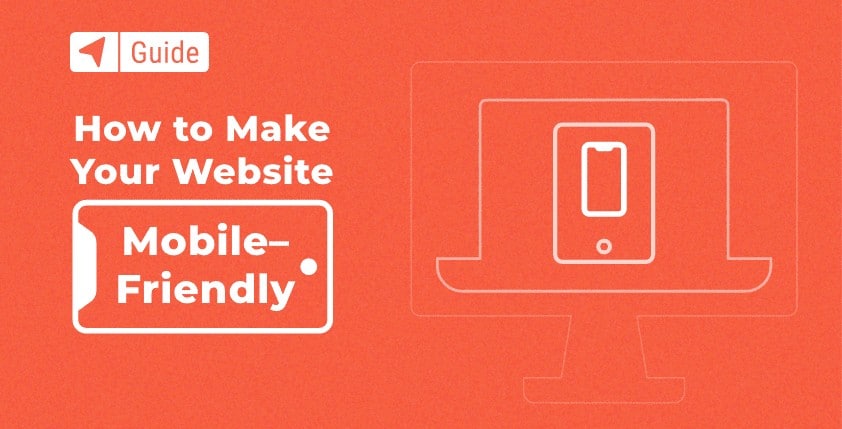Mobile-friendly website design is essential. Why? Because mobile devices are revolutionizing the way we communicate and the way businesses operate. In fact, the bulk of web traffic now comes from mobile devices.
Mobile devices are becoming not only a new digital center, but also a bridge to the physical world. There is nothing worse than a marketing funnel that is completely ineffectual on non-desktop devices.
As the world becomes more and more digital, it is becoming increasingly important for a business to have a mobile-optimized website. With over half of all internet traffic coming from mobile devices, it is important to make sure your website is optimized for mobile devices. Additionally, with good internet, you can be sure that your website will be fast, reliable, and secure. Consider Cox’s high-speed internet can help reduce page load times, and its advanced security features can help protect your site from cyber threats. Cox Internet Plans can help you achieve all of the best practices we will cover in this post.
In this article, we will look at some of the best practices for building a mobile-friendly website.
SEO Optimization
As more and more people use their mobile devices for search, optimizing your website for mobile SEO can help boost your visibility on search engine result pages (SERPs). These include using mobile-friendly keywords, mobile-friendly URL structure, and implementing mobile-friendly structured data.
Ensure responsiveness
It is important that your site is responsive. A responsive website adapts to the size of the device it is viewed on. This means that whether a user is visiting your site from a desktop, tablet, or smartphone, they will have a seamless browsing experience. To do this, it is important to use a responsive design structure and test your site on different devices.
Page speed
Another important factor for mobile devices is page speed. Mobile users are often on the go looking for information quickly, so it is important to ensure that your website loads quickly. This means optimizing images, minimizing HTTP requests, and compressing files. A website that loads quickly not only provides a better user experience but also helps improve your search engine rankings.
Use Accelerated Mobile Pages (AMP)
AMP is an open-source technology that allows your website to load quickly on mobile devices. By using AMP, you can optimize your website for mobile devices, reduce loading times, and improve user experience.
Prioritize user experience
When designing a mobile-friendly website, it is also important to prioritize user experience. This means focusing on ease of use, navigation, and content. Your website should be easy to navigate with clear menus and calls to action. Content should be short and easy to read, with plenty of whitespace to improve readability. It is also important to make sure your site is accessible to everyone, including people with disabilities. This means using alternative text for images and providing subtitles for videos.
Mobile-friendly typography
It is important to use fonts that are easy to read on mobile devices to improve the user experience. Choose fonts that are legible and large enough to be readable on small screens. Also, make sure there is enough space between lines and characters for good readability.
Reduce pop-ups
Pop-ups and interstitials can annoy mobile device users as they can block the content they are trying to access. If you use them, make sure they close easily and do not take up too much screen space.
Mobile-friendly forms
If your site invites users to fill out forms, make sure they are mobile-friendly. This means using large, user-friendly form fields and keeping the required fields to a minimum. Also, consider implementing autocomplete features to make it easier for users to fill out forms.
Optimize images
High-quality images can improve the look of your website, but they can also slow down loading times on mobile devices. To make your images mobile-friendly, compress them and reduce the file size. Also, consider using responsive images that resize based on the device you are using.
Navigation is an important part of a website, especially on mobile devices where space is limited. Use a simple and convenient navigation menu that you can access from any page on your website. Consider using hamburger menus, drop-down menus, and other mobile-friendly navigation styles.
Optimize content
Keep mobile users in mind when creating content for your website. Use short paragraphs, bullets, and other formatting techniques to make your content easy to read on small screens. Also, avoid using large blocks of text and complex images, which can slow down loading times.
Test it out
Before launching your website, test it on different mobile devices to make sure it works correctly. Use tools like the Google mobile test to check if your site is mobile-friendly and identify issues that need to be fixed.
In summary
In short, building a mobile website is critical to businesses in today’s digital landscape. By following these best practices and using a reliable internet, you can create a website that is mobile-friendly, loads quickly, and provides a positive user experience. With a mobile-friendly website, you can attract and retain more visitors, increase conversions, and drive business success.
- 10GbVPS Review – Review Their VPS Hosting Services (2024) - June 1, 2024
- BlueServers Review – Unbiased Look at Their Dedicated Hosting Services (2024) - June 1, 2024
- 10 Best Programming Languages For Web Development - February 27, 2024

